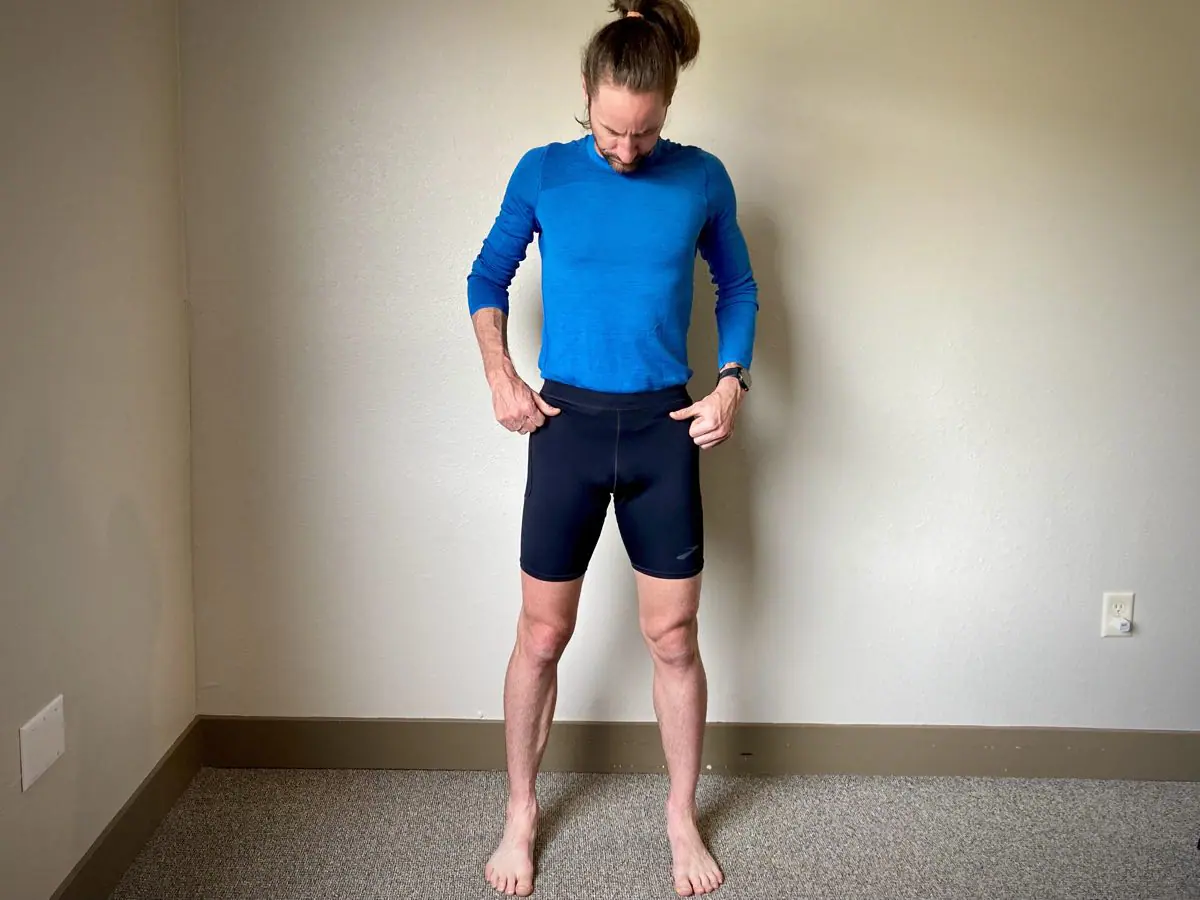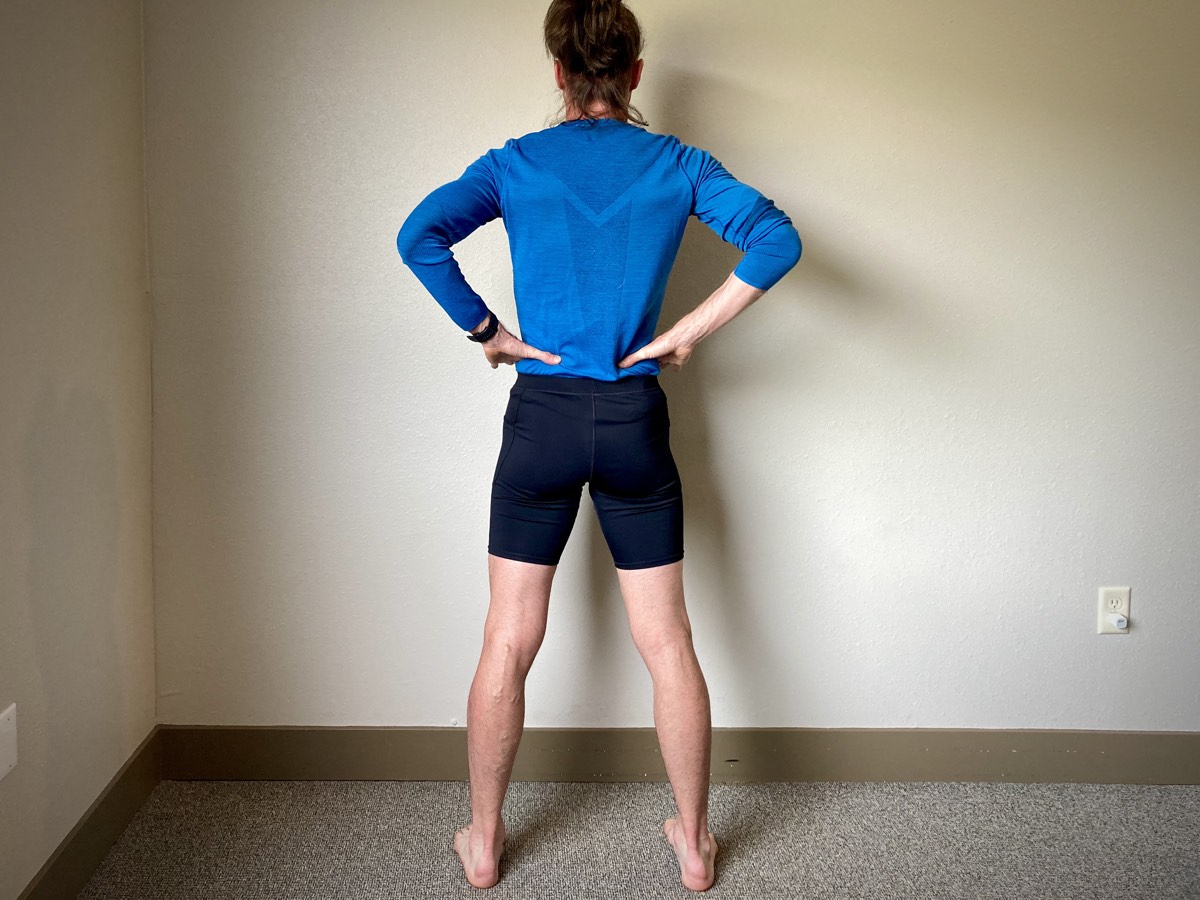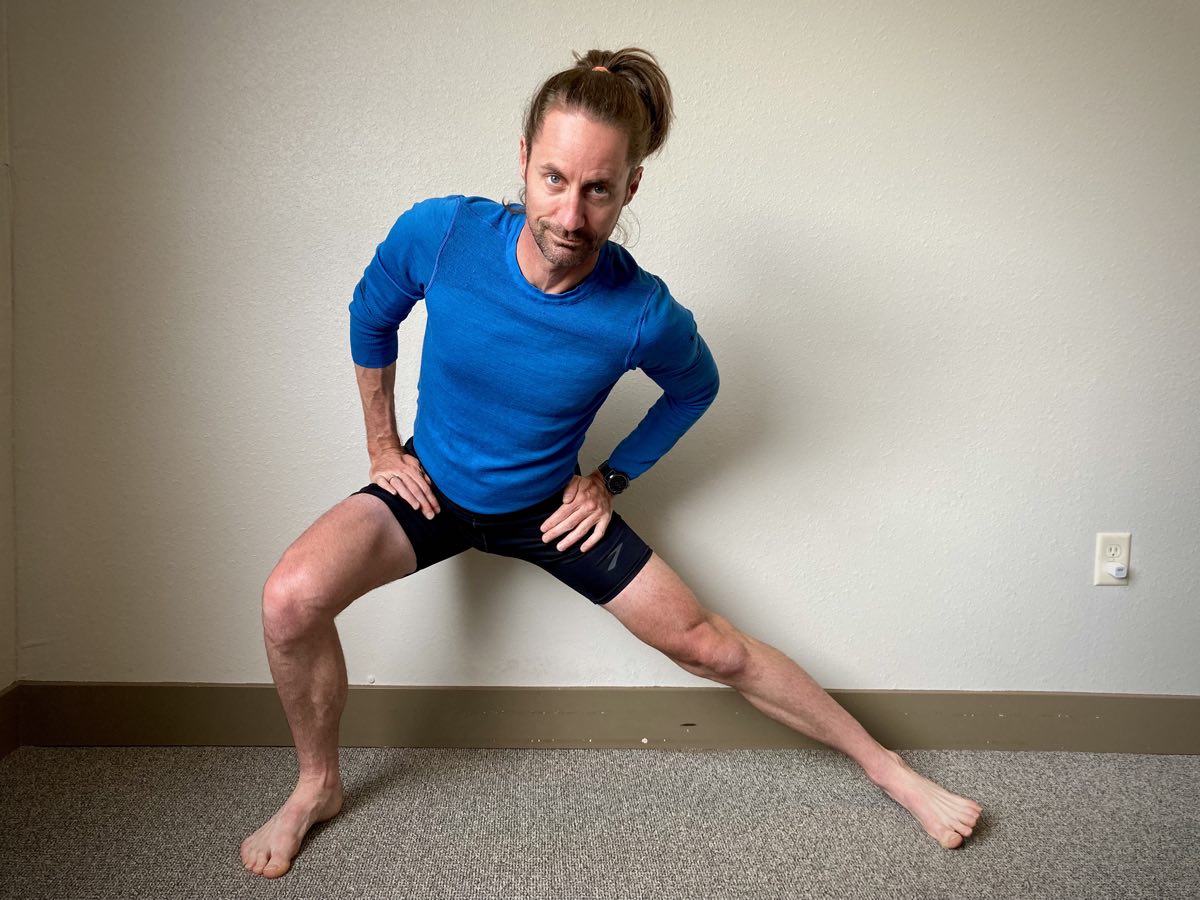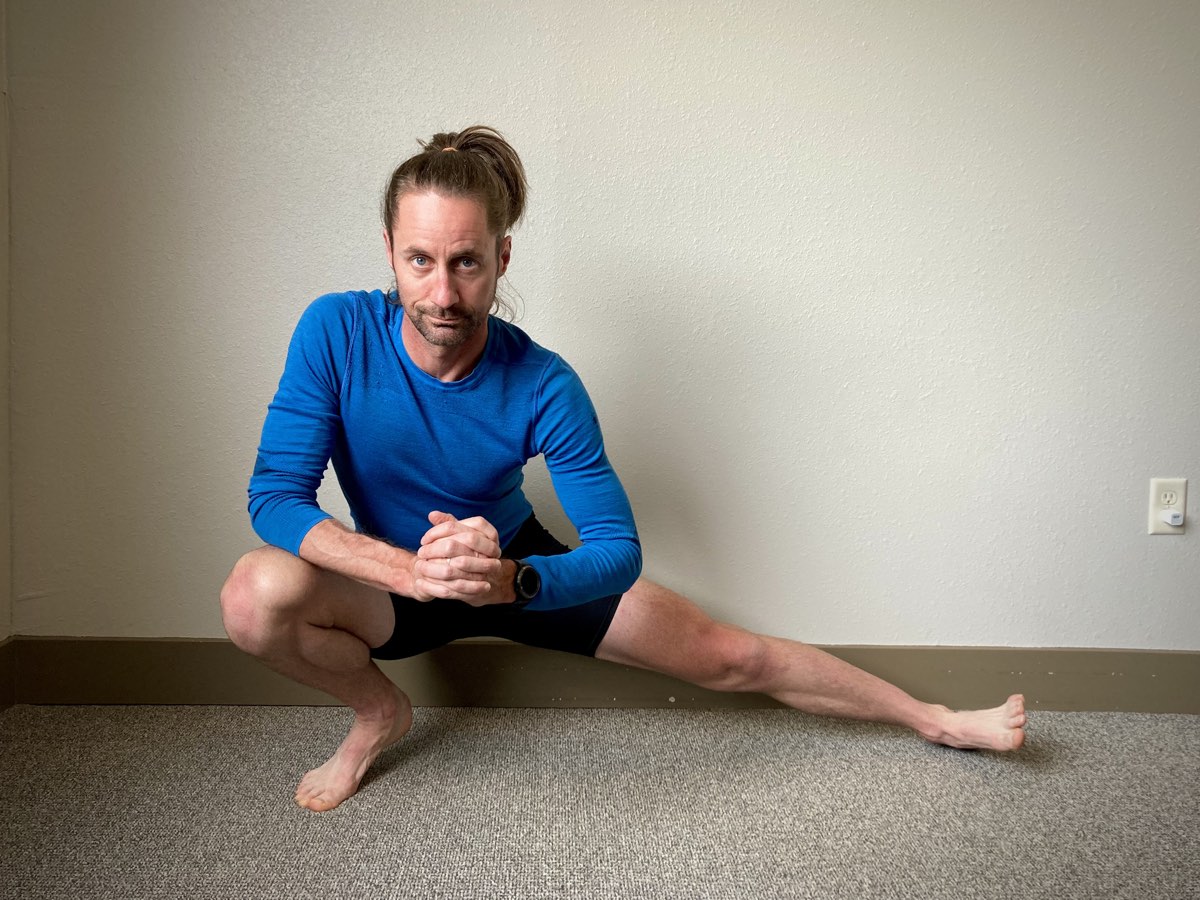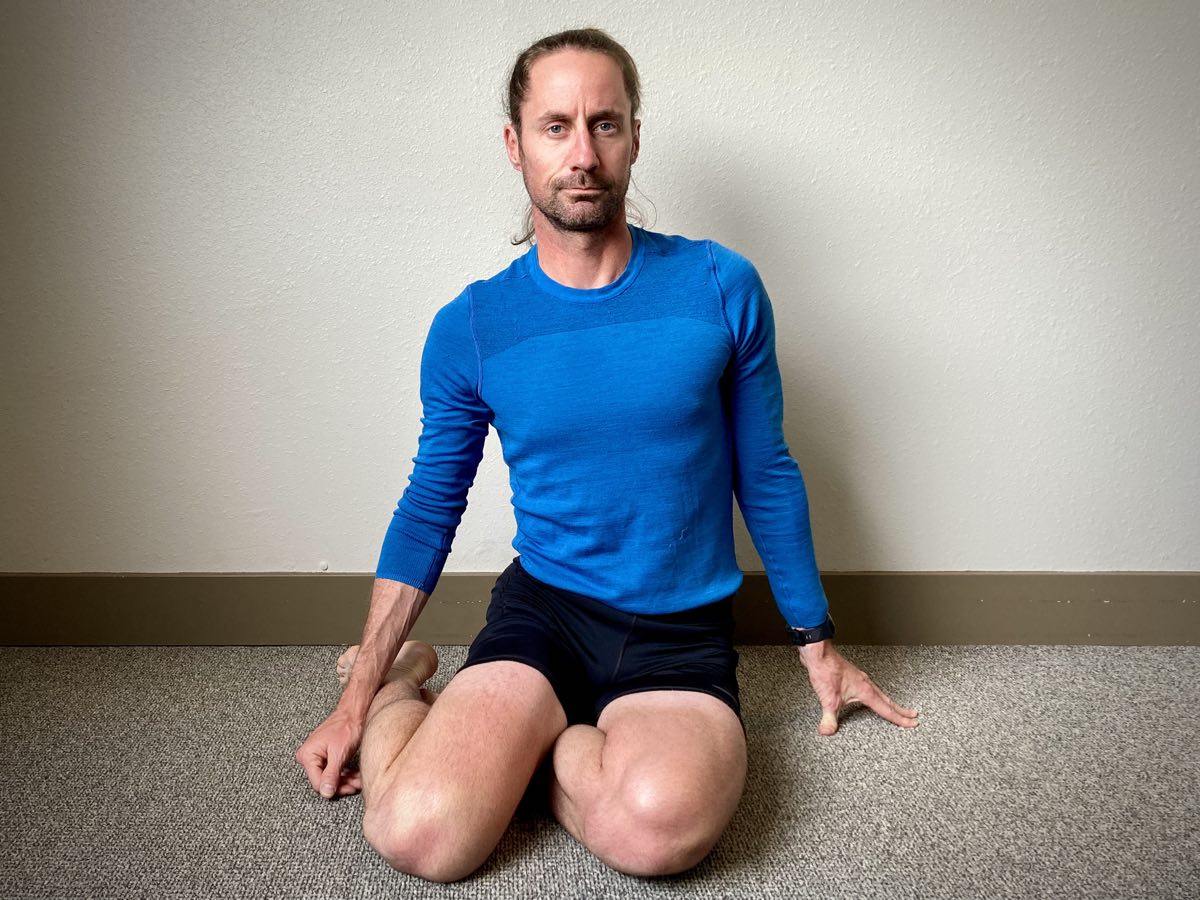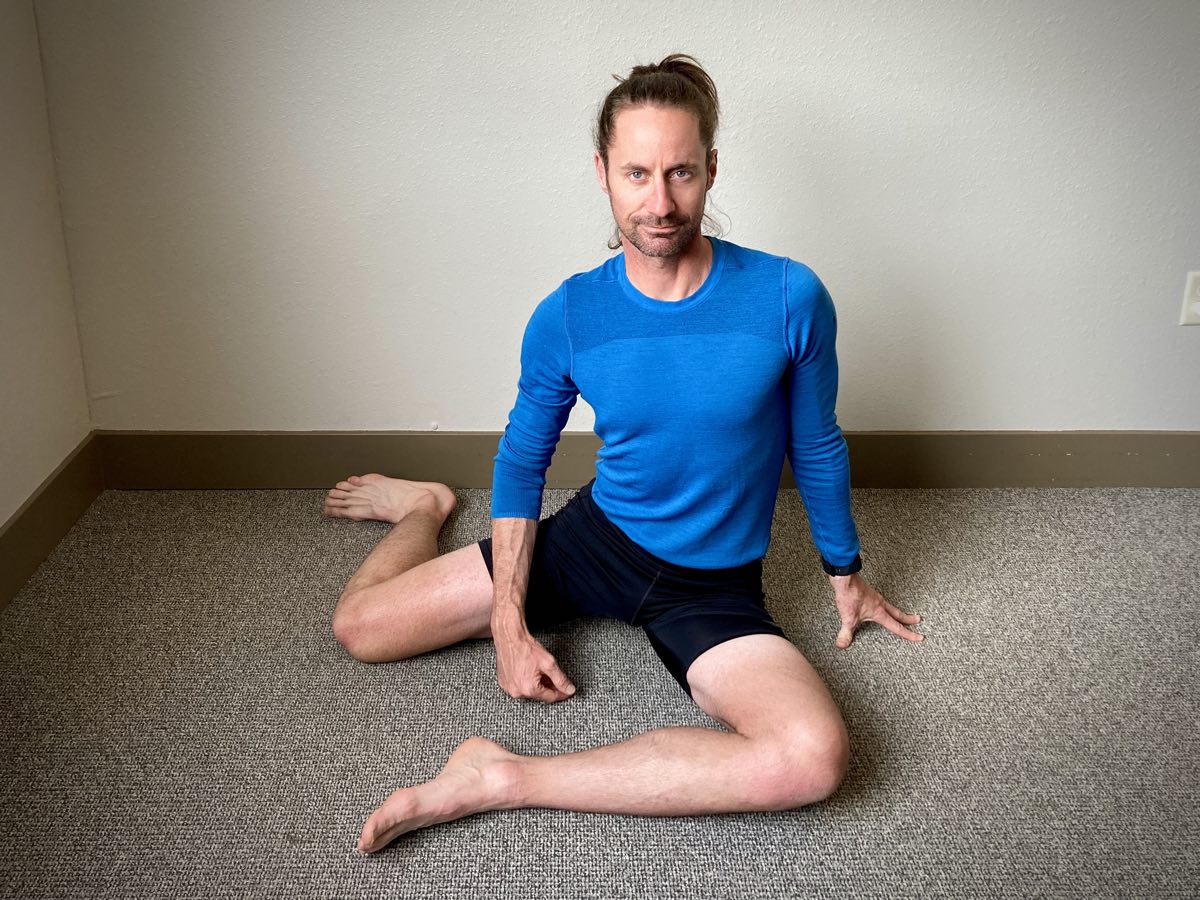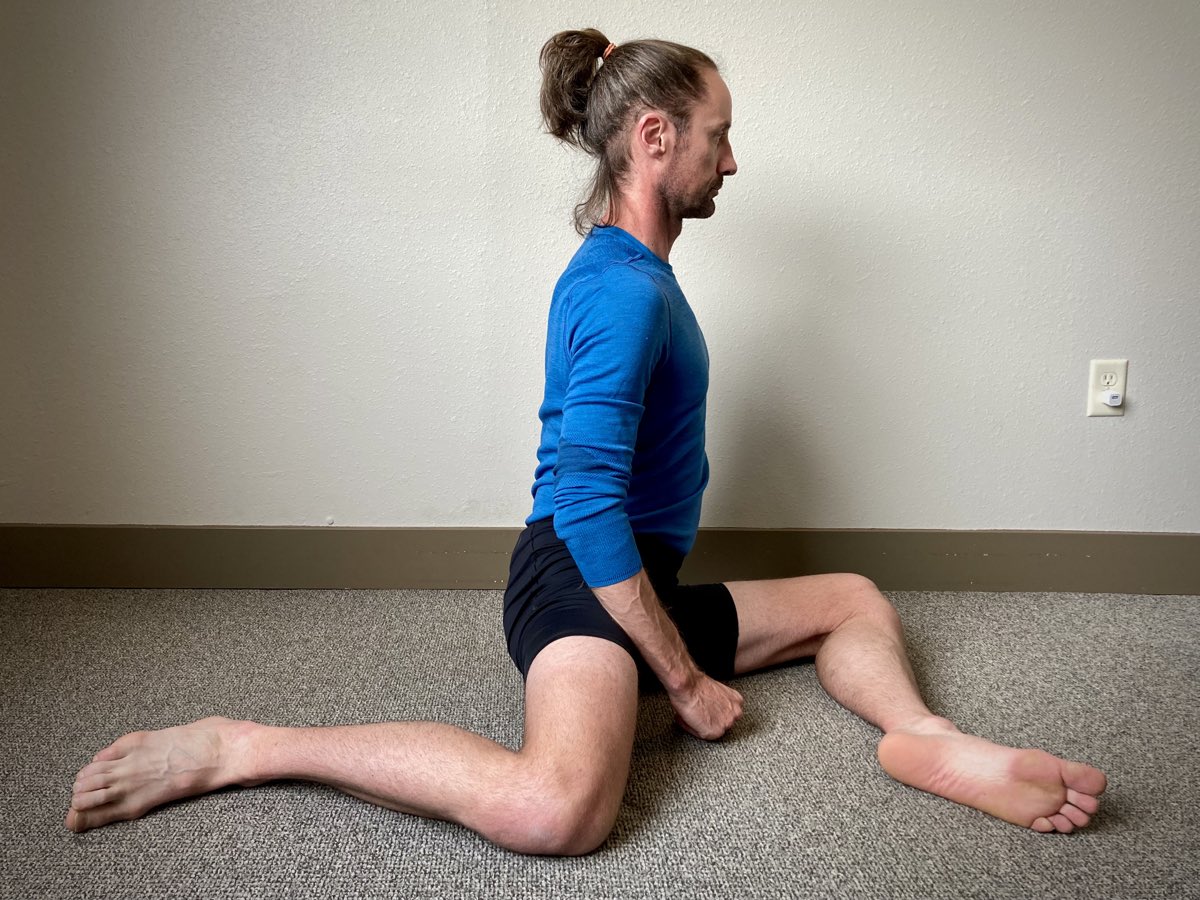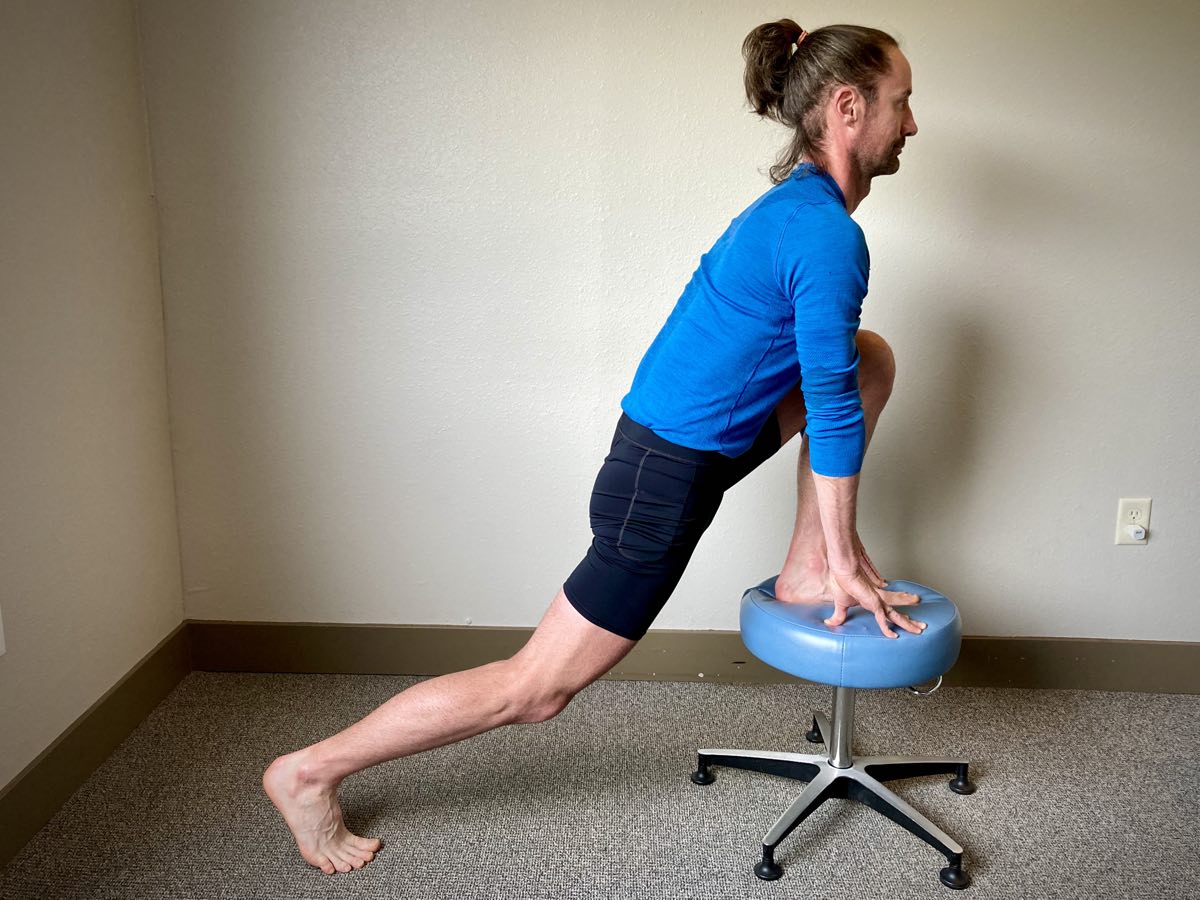Ever wonder why your seemingly minor leg strain or tendinitis fails to heal? That taking time off can help, but the moment you return to running, that pain is back again?
Chronic, pesky aches and pains are often driven by mechanical dysfunctions: parts of a moving system that fail to move correctly, causing ongoing stress somewhere in the system.
Most runners recognize the importance of hip mobility and strength, and how stiff and weak hips can cause pain above or below the hip. But what about the pelvis?
It seems that the only time the pelvis gets our attention — as athletes, or even sports medicine providers — is when the pelvis, itself, is painful. But the pelvis may be the most crucial structure for efficient, pain-free running. And a stiff, out-of-alignment pelvis can both cause and perpetuate nearly every leg injury.
Let’s learn about the role of the pelvis, how it creates and sustains pain and injury, and what you can do to self-assess and improve pelvic mobility!
Background on the Pelvis
When explaining the inner workings of our orthopedic system, I make a lot of automotive analogies. If our body is a car, then the pelvis is the rim of the wheel. The entire leg, then, is the tire. It attaches to the rim, and as such, any misalignment or motion impairment of the rim invariably stresses the tire. In this case, the entire leg — the hip, knee, and even the foot and ankle — is directly impacted by the alignment and mobility of the pelvis to which it attaches.
As such, efficient position and motion of the pelvis is crucial to the efficient loading and movement of the entire leg, as well as the chassis — the low back and spine, in general — above it.
Yet across the board, both athletes and even experienced sports medicine professionals fail to recognize and appreciate the importance of pelvic alignment and motion in both performance and injury treatment and prevention. Pelvic dysfunction is often the cause and perpetuation of some of the most common and stubbornly persistent running injuries.
The goal of this article is to outline how the pelvis needs to move, what happens if it fails to align and move efficiently, and how to restore efficiency to this important center of our locomotion!
The Pelvis’s Function, Anatomy, and Motion
The pelvis has two primary functions:
- To serve as a conduit between the chassis — the trunk and upper body — and the tire —the leg — for locomotion; and
- To hold our abdominal organs.
As humans, and especially athletes, the body must perform both these roles well and simultaneously, which can be challenging.
The pelvis has a bowl-like appearance and shape, which helps hold the contents of our abdomen. And while it looks like a single hemispherical bone, it is technically two separate bones (and a third, the sacrum) that make up the functional pelvis.
The two pelvic bones — often referred to as the innominates — are actually each composed of three fused bones:
- Ilium (the upper rim or waist),
- Ischium (the sit bone), and
- Pubis (anterior bone).
The two innominates can and must perform a variety of motions ranging from subtle rotations to expansive opening and closing motions. The eight total motions include:
- Flexion and extension,
- Abduction and adduction,
- Internal and external rotation, and
- Elevation and depression.
All of these motions are crucial for all the athletic activities humans can perform, including squatting, running, and birthing children!
These motions are crucial to efficient leg function. Pelvic motion dictates how efficiently the leg bones balance and load, as well as how the muscles attached to the pelvis move or stabilize the legs.
As such, because these motions are subtle, but the leg functions — stretching, walking, running, and jumping — are so aggressive, the pelvis plays an enormous role in the ease and magnitude of these functional movements.
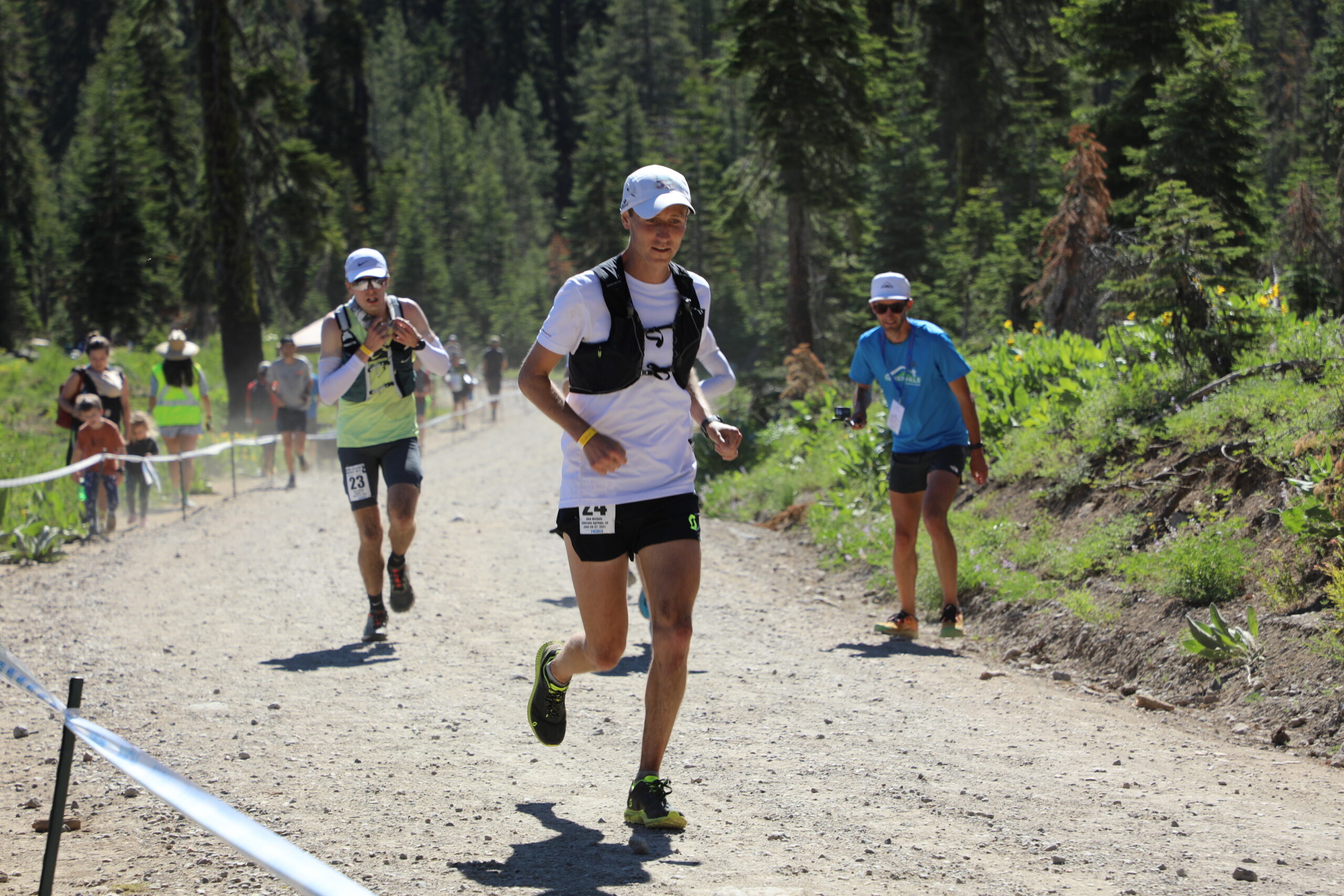
Alex Nichols makes his way up toward Robinson Flat during the 2021 Western States 100. Photo: iRunFar/Bryon Powell
Where Inefficiency Develops in the Pelvis
The pelvis seldom gets the attention it deserves as the causative factor in so many common and stubborn leg and back problems. Hip, knee, or foot pain, and stubborn diagnoses such as hip impingement or hamstring pathology are often caused and perpetuated by pelvic dysfunction.
This video explains a little about the function of the pelvis.
When considering how pelvis bones lose efficient alignment and motion, let’s first identify the types of tissues that can cause inefficiency.
Joints
This refers to the articulation of one bone to another, involving a combination of ligaments and other passive soft tissues that connect those two bones. A variety of factors can contribute to the joint connection becoming stiff.
Soft Tissues
This is any tissue connecting or surrounding the pelvis bones, including muscles, tendons, ligaments, fascia, and even our visceral organs. Stiffness or tightness of soft tissues can restrict motion or cause misalignment of the pelvis.
Visceral (gut) range-of-motion loss is an insidious but very potent range-of-motion inhibitor of the pelvis. The pelvis must both hold the guts, but allow them to move, for the efficient function of both the gut, itself, but also the pelvis and legs. Sticky guts on the inner pelvic rim can significantly inhibit pelvic and hip motion.
Nerves
Nerves and nerve tension can restrict pelvis position and alignment if the nerves in or around the pelvis do not have enough mobility. Nerve tension can occur in the pelvis, as well as above the pelvis, and cause misalignment and motion restrictions of the pelvis bones, to accommodate a tight and sensitive nerve.
How Inefficiency Develops in the Pelvis
The issues and situations that cause those tissues to restrict pelvis motion include things like:
Trauma
Simple, even mild falls — landing on the pelvis or otherwise stressing the spine — can cause pelvic misalignment and range-of-motion loss. The most common cause of unilateral pelvic stiffness is falling on that side of the pelvis.
Surgery
Any abdominal surgery (even arthroscopic, which involves only small holes into the abdomen) can create scar tissue around the hip and pelvis, resulting in range-of-motion loss.
Internal Illness
Any abdominal illness, ranging from a bout of food poisoning or parasitic infection to even food sensitivities, can cause the digestive organs to adhere to the bones of the pelvis.
Pregnancy and Childbirth
This might be the most common, yet most overlooked, cause of pelvic inefficiency. Pregnancy and childbirth cause significant stressors to the pelvis. During pregnancy, the growing fetus pushes on both the pelvic bones and surrounding viscera. Then, during childbirth, the pelvic bones and joints can become strained.
Post-childbirth joint strain tends to result in more acute and significant hip and pelvic pain. More insidious is the effect of pregnancy on visceral mobility. That rather large baby can push against the organs for months and cause long-lasting adherences, long after they have vacated the area!
Effects of Pelvic Misalignment and Range-of-Motion Loss
Returning to the automotive analogy, a pelvis lacking efficient alignment or motion is like the wheel of a car lacking the same: if the wheel is out of alignment, or worse, if the parking brake is stuck on, the car won’t drive well. Anyone who has driven a car whose wheels are out of alignment knows the feeling of shaking at certain speeds.
The same thing happens with an inefficient pelvis. Pelvic bones that don’t move correctly, or that don’t point straight down the road may potentially cause increased strain to the whole leg below, and the spine, above.
The most prominent example of a pelvis-driven dysfunction is chronic hamstring pain. If the pelvis is stuck in an anterior rotation, or extended position — where the front end is angled downward and the back end angled upward — this places constant length tension strain on the hamstring. And almost no amount of hamstring strengthening, stretching, or massage will remove that excess tension, unless the pelvic motion and neutral alignment are restored.
The same goes with anterior hip impingement. The other side of the same coin, if the pelvis is stuck anterior/extended, the front half of the pelvis — containing the hip-joint socket — is pointed excessively and persistently downward. This may cause anterior hip impingement, where the hip ball or surrounding soft tissues get pinched and irritated at the rim of the socket. Again, no amount of hip flexor stretching, strength, and massage will sustainably correct this issue.
Lastly, the motion and angulation of the pelvis has efficiency effects throughout the system. A pelvic bone that is stuck in one motion, or otherwise can’t freely move, will affect the motion and impact of the whole leg.
The video below explains how a stiff pelvis can cause pain.
Strategies for Efficient Pelvic Alignment and Motion
The strategies to address and prevent almost all running-related leg and spine pain should begin with the restoration of motion and alignment of the pelvis. To do so is to first identify a dysfunction.
Skilled physiotherapists should be trained and well-versed in assessing pelvic alignment and motion (though, admittedly, many are not — and even fewer non-physiotherapist sports medicine practitioners are). Doing it requires only knowing a few key bony landmarks, then performing some basic self-assessments.
There are three bony landmarks to look for.
Anterior Superior Iliac Spine (ASIS)
This is made up of two bumps on the front of the pelvis. In neutral standing, these two bumps should be of equal height and, more subtly, pointed straight ahead.
Posterior Superior Iliac Spine (PSIS)
This is two small bumps on the back side of the pelvis, just below a typical waistband. These, too, should be of equal height in standing.
Iliac Crest
This is the top and lateral aspect of the pelvis, an area that folks often refer to as their hips. These should be of equal height in standing.
Misalignment that presents in neutral is significant, and likely means that the pelvic bones also do not move fully or efficiently.
Pelvic Self-Assessments
After that, runners can perform basic self-assessments. Most hip stretches also target pelvic mobility at the same time. My favorite pelvic motion self-assessments include:
- Flexion and extension, with knee to chest and runner’s lunge.
- Abduction and rotations, with the hurdler stretch.
Significant general stiffness or, more problematic, side-to-side asymmetry in either of these metrics, especially paired with a positional misalignment, is cause for concern and intervention at the pelvis.
At this point, I overwhelmingly recommend runners consult a skilled, manual practitioner to further identify and comprehensively treat any pelvic or hip misalignment and range-of-motion loss. These are pesky and — if caused by trauma, stubborn soft tissue, or nerve tension restrictions — they are unlikely to be sustainably improved with self-treatment alone.
Pelvic Self-Mobilizations
That said, if you find yourself without such help, here are some self-mobility strategies worth trying:
- Ball massage. Using a medium-sized ball of medium or firm density, massage around the bony contours of the pelvis using the ball against the wall or the floor — similar to what was outlined in this article about hip mobility. Working the posterior and lateral upper pelvis, in particular, will help free the soft tissues between the pelvis and the trunk.
- Visceral massage. Gut mobility is trickier, but there are a couple of simple, safe techniques to try. General push/pull belly techniques (as outlined in this article) are a good start. I also recommend gentle, soft ball massage tools such as this one, which can help loosen the abdominal organs from the pelvis.
Here is a video outlining both the self-assessment and treatment strategies:
Stiff soft tissues often tend to shrink-wrap the bones of the pelvis, making them difficult to stretch. This is especially true if any soft tissue stiffness is historic, or dating back months or years, and pervasive. Beginning with focused, soft tissue mobility strategies will make any other technique more effective, including general stretching.
[Author’s Note: Rigid joints often require significant manual mobilization or manipulation. Again, I recommend seeing a skilled manual physiotherapist or similar practitioner for this kind of work.]
Pelvic Mobility Exercises
Below are some strategies to both assess and improve pelvic mobility.
Side Lunge and Ninja Stretches
These stretches work on pelvic abduction, or opening.
Boogie Board Stretch
Developed by my mentor Gregg Johnson, PT, this stretch works on pelvic depression and elevation, as well as relative pelvic rotation.
Hurdler’s Stretch
This stretch is another abduction strategy, with greater emphasis on pelvic-specific opening.
Runner’s Lunge
This works on both pelvic flexion and contralateral extension. A wider stance will also improve pelvic abduction.
Conclusion
The pelvis is the true center and foundation of our propulsive system. Healthy, pain-free running requires an efficient, mobile pelvis! If you suffer from chronic, stubborn aches and pains, or if you feel stiffer and slower than usual, then be sure to consider pelvic mobility as part of your treatment strategy.
Call for Comments
- Have you tried any of the stretches and exercises that physiotherapist Joe Uhan has suggested? How did you find them?
- And what areas of a runner’s anatomy would you like us to cover next?

